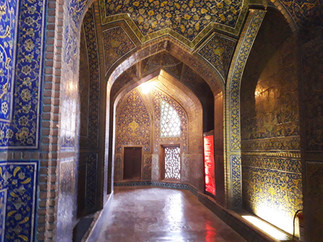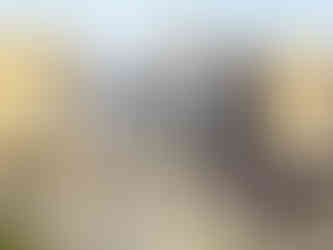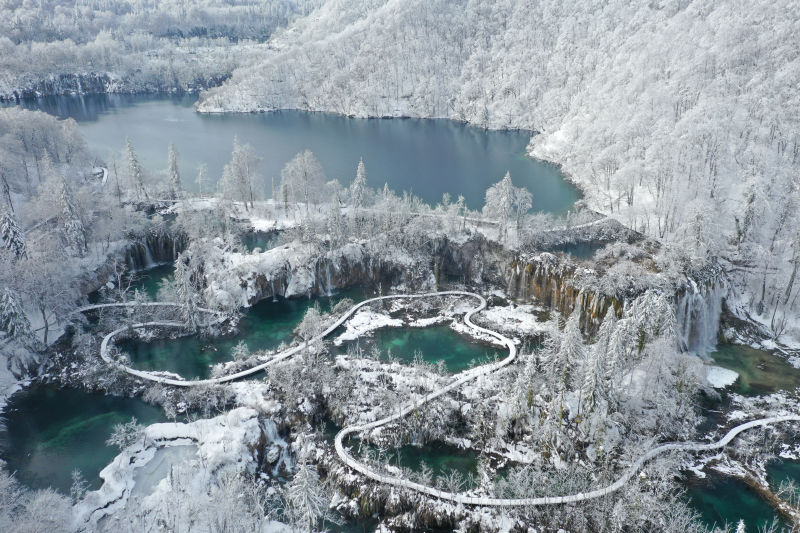Esfahan - cuisine of Half of the World
- Vedran Obućina

- Aug 8, 2022
- 8 min read
It is half of the world. Already famous sentence gets its full realisation once a person comes to the Emam Khomeini Square, simply called Naqsh-e Jahan or Half of the World. In the days of the Safavid Empire, guests arriving in the capital Esfahan would first go to the brilliant imperial palace Ali Qapu and then pass through a gorgeous bazaar. They would see the same things we see here in the Esfahan bazaar, which is indeed a lot.

Thousands of colours and scents travel among the crowd that looks at copperware, spices, rugs, kilims, glassware, and sweets. Suddenly the visitors would be taken out of the bazaar, and a spending view of the square would come to life. A vast open space is surrounded by the walls of the bazaar and is guarded by the big Emam Mosque, the beautiful blue Lotfollah Mosque, and the mighty Ali Qapu. The liveliness and openness of the magnificent square, once used as a ground for playing polo, gives a feeling that one has seen half of the world. Many Iranians would say, if you come to Iran and haven’t seen Esfahan, you wasted your time.

To keep this royal feeling, we went to Shahrzad, one of the upscale restaurants in Esfahan. It indeed feels like it. Posh doors and dozens of waiters that politely but fast take you to the table and offer the best from the menu are part of the business in this place. It tends to be a very touristic place, but it is also a good choice to have a pleasant Iranian dinner with a typical Esfahani charm. The restaurant has been running since 1967, when it was opened with the help of Mr. Abdolrahim Frudastan. It has been adorned with beautiful Iranian architecture and art as the main feature of the restaurant’s interior.

The menu is not following the interior, but it still has a lot of local foods to choose from. The skillfulness of our waiter soon got us a plate of khoresht-e māst (see below), which was a dessert before the main meal, but still a very welcomed introduction to the Esfahani cuisine. Otherwise, we had kabab, but also zereshk polo bā morgh. It is yet another beloved Iranian food. It consists of baked chicken (morgh) with barberries (zereshk) and fluffy rice (polo) and is sometimes served together with a thick soup such as soup-e morgh-e za’ferāniza’ferāni (chicken and saffron soup) or soup-e jo (barley soup).

And while the whole chicken is a welcoming sign for many foreigners eating endlessly kababs, the star of this meal is zereshk or barberry. It is grown in Khorasan, in the north-east of Iran, with a darker version called zereshk-e siāh grown in Kermanshah province in western Iran. Zereshk is cultivated together with saffron in South Khorasan. Especially around the towns of Qaen and Birjand, there is a lot of zereshkestān or zereshk gardens. This berry is rich in vitamin C and has a rather sharp flavour which is always skilfully tamed by slightly frying it in a pan with a touch of sugar. Iranians use zereshk for polo and jams, and don’t forget to use it for a gazillion of sicknesses. Like any other good plant, zereshk can turn nasty if you use it too much.

A sip of doogh, and you’re off to the nearby Enghelab Square, from which an exceptional bridge has been built over the Zayandeh Rud river. Unfortunately, there is no river; it dried out completely some years ago and can only be seen as a fond memory of the old postcards. Siosepol or Bridge with 33 vaults is one of the most picturesque bridges in the world. Officially known as the Allahverdi Khan bridge, it is beloved among the locals and visitors alike. In daylight, it shows the beautiful serenity of the arches under the bridge, while dark-yellow colours light its grandeur at night. Beneath the bridge, people gather spontaneously and sing melancholic and heart-breaking songs.

The bridge connects the historical centre with the Armenian New Jolfa neighbourhood, where the marvellous Vank Cathedral sits in the middle of a very cosy area full of coffee shops, small restaurants, and various artisan workshops. Armenian Christians have lived here since the time of Shah Abbas I. They retained their religious traditions but are gastronomically mostly akin to their Iranian co-patriots.

Passing back through a lovely garden path along the river, one arrives at the restaurant Azam. This self-service style place is usually full of people, and there is a good reason for it. Azam is one of the best places in Esfahan, where Beryani is served as the traditional dish from this town. The history of this place and its family runs deep. It was established in 1916 by Ali Akhavan, his father Abdolkarim, and the heritage of the Akhavan family lives on. The family was at a time at the forefront of the Kabab and Beryani producers’ association in Esfahan, always caring that local culinary heritage survives. Azam has four branches in Esfahan and is popular among locals and tourists alike.

So, what is this famed Beryani that makes people wait in queues? You might have already heard about this dish or tasted it in an Indian restaurant. Beryani might be just the word you’ve heard, but it doesn’t have anything to do with the pilaf rice with meat and seasoning, famously made in Hyderabad and other parts of India. This pilaf, however, indeed originates from Iran and its name is undoubtedly Iranian as it means fried rice (berenj-e beryan). But, in the Iranian version, it doesn’t come with rice! Despite its name, it is a fried meat patty crowned with walnuts and almonds and wrapped into folds of a tender taftoon bread. Minced lamb shoulder, onion, turmeric, cinnamon, mint, and saffron are combined in a rather jealously kept recipe passed down within families like a treasure.

We sit with the owner Mr. Akhavan and his chef while explaining that the lamb comes from a well-known source in the Esfahan province. We are drinking homemade doogh, a cold savoury yoghurt-based beverage mixed with salt and green herbs. We had this popular drink all over Iran, but in Azam, it has a really strong flavour as it is homemade. Ready for your Beryani? Not so fast! Although Beryani is a very strong and hearty meal, Iranians usually eat Abgusht first. It is not a whole meal, but still, it is already filling our belly even before Beryani comes. And then, the glorious moment arrives. Wrapped in a beautifully soft taftoon bread, Beryani is eaten with hand. It has a meaty and nutty flavour, which blends perfectly with doogh and soft bread. With a full belly, it is better to take a nap, have some lovely tea in Hasht Behesht (Eight Paradises) park, or visit Chehel Sotun (Forty Columns) palace.

Not far from the Khojoo Bridge is a place where one can try and buy the best khoresht-e māst in Esfahan. Well, this is at least by the standards given by our Croatian friend Ivan, who has lived in Esfahan already for several years. He is a great guy, an excellent photographer, and the creator of a new style of Iranian postcards. He took us to experience some of the best culinary places he knows in this beautiful town. Our first stop was a shop on Chahar Bagh Khajoo street, where khoresht-e māst is served. Its name means yoghurt stew and is a very typical dish for Esfahan. Despite its name, it is not a stew, nor would you consider it as a main dish. It is more a sweet pudding and is usually served as a side dish or a dessert. At the same time, khoresht-e māst might be one of the most peculiar foods in Iran.
The dish itself is made from very “Iranian” ingredients: yoghurt, chicken (some put lamb), saffron, sugar, and orange zest, sometimes decorated with a few drops of zereshk. It has a beautiful texture and creamy sweet-and-sour taste and is favourite among Esfahanis. Its bright yellow colour comes from saffron and orange peel zest, and the smell is the same. Hardly would one think this is a dish made with meat! However, at a time when Esfahani people started preparing khoresht-e māst, it was considered to be a cherished main course dish.

Just a few hundred metres away is the traditional teahouse Makineh Khajoo. Ivan described this place as a very “manly” place, full of moustache and shisha smokers, where serious stuff is served: dizi. Indeed, the place was full of people, and we could barely find a table suit for four people. The air is thick and full of the sweet fragrance of shisha. An old guy sitting at the table close to the entrance, which looks like he lives in this place, is the owner of this teahouse and warmly greets every customer while the hundreds of Iranian rial banknotes easily cross through his fingers. Devoted pictures of Imam Hossein are all present here as a reminder that teahouse-goers are religious people who belong to some Ashora procession brotherhood.

The menu shows shisha flavours and not so much food as everyone knows it is dizi being eaten here. Apparently, two apples are the best shisha in this enterprise, so we had it after lunch. However, our first adventure was dizi itself. It is a synonym for Abgusht, which literally means meat broth. It is a quintessential Iranian dish and one of the most popular in the country. Dizi is, in fact, a name for an earthenware pot where the food is prepared. It is one of the oldest dishes of humankind, as the recipe goes back to the dawn of civilisation, in ancient Mesopotamia. Chopped lamb, chickpeas, white beans, chopped onions, garlic cloves, turmeric, and pepper are mixed and boiled in the water.

When ready, it has a unique way of serving. The broth and the paste are served separately! The broth is first placed in a bowl and eaten usually with bread soaked in it (Iranians call this broth with bread Terid). The rest has to be mashed. Traditionally, while serving Dizi, the waiters offer guests meat smashers to crush the ingredients, which are then spooned on a piece of bread and eaten with hand. Vegetables, especially raw onion and lime, are served next to it. Although very enjoyable, this dish might be a challenge for foreigners, so you can ask the waiter to mash your Dizi for you. Dizi is always eaten warm as it gives excellent taste in broth and paste!

After that, it is only relaxation needed! Among the best ones, where you can soak in the local atmosphere and see Iranians enjoying themselves is a small teahouse within the bazaar. Shrouded in wrestling memorabilia and filled with old kitchen utensils, seesaws, teapots, swords, and everything similar that one needs in a typical household, this teahouse consists of two rows of seats where you can just chat with your friends or locals while drinking tea with some sweets. Here, you can stir your tea with nabat, sugar crystals usually with some additional flavour (saffron being the most popular), conveniently placed on a small stick. Nabat is widely used to sweeten tea and other “tasteless” or bitter drinks prepared with flowers and herbs extracts.

But, with tea, you would probably get Gaz, an Iranian nougat and masterpiece of Iranian desserts. It is also a native product of Esfahan province, as it is made with the help of the root of a plant called Gaz tree. It grows around the city, usually on the slopes of the Zagros mountains. This root is called manna (according to the Biblical and Qu’ranicQu’ranic story of manna that God gave to Israelites in the Sinai desert). Bees visit the root, and the end product is a sticky white substance formed from honeydew. It is then combined with other ingredients, including pistachio, almond, rosewater, and egg white, to make this delicious nougat, which can have a subtler flavour of rose, nuts, or savoury depending on the ingredients mixed in. There are numerous types of Gaz, and not all have manna in them. We have tried those that have a special kind, like Assari Gaz.

The white stuff is called Angabin and is obtained from the Gaz trees in the vast areas of Khansar, Zardkooh, and Bakhtiari mountains. Gaz fly lives in the brunches and is fed on the nectar of the same bush. It sucks up the plant’s nectar and develops the same process as a bee. The fly leaves the processed nectar on the branches, which is how manna comes to life. The properties of Angabin have been famous in Iran from ancient times, as it has been known as a healing tonic and the elixir of life and youth. Very soon, one gets addicted to Gaz, and you will just be returning for more! But that is Esfahan – a town worth at least half of the world!








































Comments